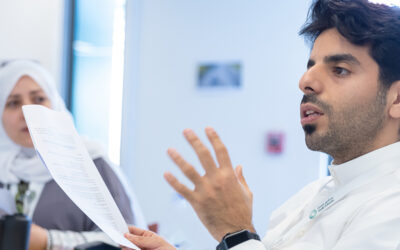UNIS Hanoi believe strongly that great leaders are made, and not born. Megan Brazil and Jenny-Lee Moore from UNIS Hanoi share some advice to help empower international school leaders.
ARCHIVE
You’re viewing the archive for:
ISL Magazine
ARCHIVE LISTING
ISL Magazine
Action research as an improvement driver in international schools
By engaging in action research projects, a team of advanced skills teachers have successfully improved the quality of teaching and learning against the school improvement plan. By supporting practice with educational research and emphasising the ‘why’ behind improvement efforts, staff members have bought into the process and are achieving more meaningful progress.
Hybrid learning partnerships: three ways to support your school’s growth
A hybrid learning partnership can be the key to steadying, expanding and futureproofing your international school. Delivering world-class, live, interactive teaching fully online, 2023 COBIS Award winner King’s InterHigh is a solution international schools trust.
AI is coming to school. Are we ready?
Imagine walking into a classroom where an artificially intelligent tutor provides individualised instruction to each student. Where a virtual assistant instantly answers questions, summarises passages of text and offers writing suggestions. And where algorithms analyse reams of data to flag students at risk of falling behind. This vision of an AI-powered classroom is closer than you may think, but is it what we want?
Building consensus for a meaningful AI policy
Since ChatGPT became publicly available in November 2022, schools have been reeling from the effects of artificial intelligence. In this article, Chris Ferrara discusses ways schools can build a consensus for a meaningful AI policy.
Growing through kindness
In light of World Kindness Day, Lauren Kelley, Diversity, Equity, Inclusion and Belonging Coordinator, ACS International Schools, discusses the pivotal role that kindness plays in ACS’ organisational values and what kindness looks like in an educational setting.
Navigating edtech challenges in international K-12 schools
Educational technology has the power to transform learning in international schools. Technology can help teachers and administrators create an inclusive, flexible and adaptive learning environment that helps to prepare students for the challenges and opportunities of the 21st century. Dr Megan Conrad from ExploreLearning shares some advice to help international schools choose effective edtech products that work for their students.
Restorative practices and Third Culture Kids
Alistair Goold discusses restorative practices – a growing phenomenon gaining traction in international schools – which hold the promise of transforming school culture and climate through evidence-based methodologies.
Make bilingual CPD part of your leadership development strategy
One problem that often appears in schools with a high proportion of local staff is the difficulty they have in accessing the plethora of professional development opportunities that are only accessible to those with a professional or proficient level of English. There is a solution, which does not seem to be common practice, which is to deliver professional development programmes bilingually. Jeremy Newton shares some tips to help international educators clarify what is possible and how to implement a professional development programme at their school.
The Third Space – A reflection on ways we develop our sense of context, community and culture as international schools
As the sector has evolved from primarily teaching the children of globally mobile expats, to a demographic increasingly made up of local students, there is a mandate upon school leaders to consider ways in which the values and curricula of our schools should evolve to meet the changing needs of our students. Simon Probert reflects on the changing international school sector.
GET IN TOUCH
Let's discuss your needs
We are dedicated and committed to supporting the broader international schools community by providing data, trends and intelligence. Since 1994, we have guided schools with their growth plans, informed investors on new school development, helped universities to engage with international schools, and advised education suppliers that are supporting the market.










